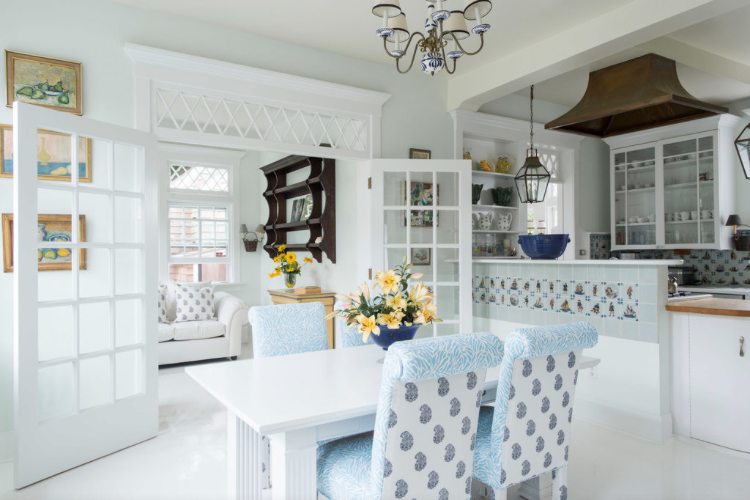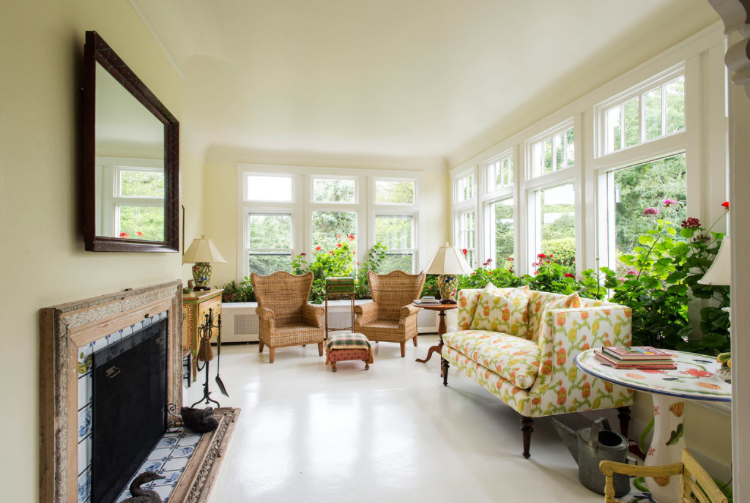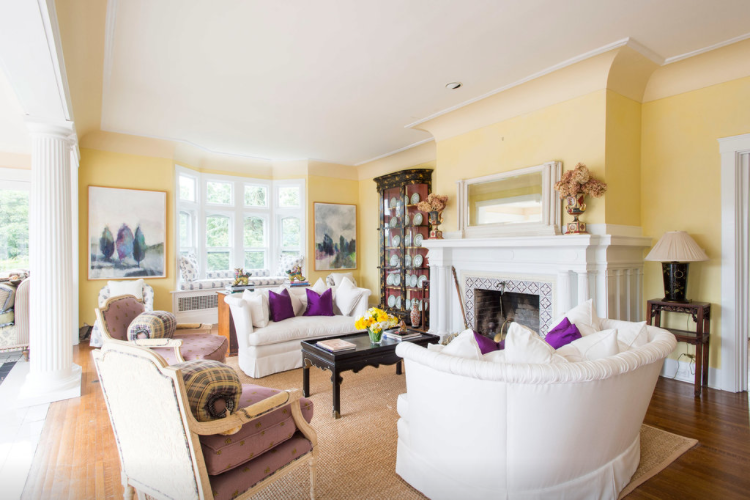A Classic Hamptons Cottage
18 Cranberry Lane, Amagansett, NY. Site of Lucy's 2017 "Water Colour" exhibit.
18 Cranberry Lane is an exemplar of the classic, shingle-style Hamptons cottage, built as a 1910 summer home on 5.2 acres on a bayside bluff in Amagansett. It is one of four remaining original Devon Colony homes.
Capped by gables and illumined by transom windows and French doors overlooking a 55-by-21-foot brick patio with a slate cartouche and fountain, the house has six bedrooms, three bathrooms, two powder rooms and four wood-burning fireplaces, some with Delft tile surrounds. The floors are oak, and the 10-foot cove ceilings, living room bay window, center staircase and plaster moldings are original to the home, the last of the Devon properties to be built and the only one not constructed of stucco. Two of the homes are still owned by descendants of the families that built them; all five remain intact despite renovations.
The Devon Colony was formed at the turn of the 20th century by four wealthy businessmen from Cincinnati: Richmond Levering, William Cooper Procter (a grandson of a Procter & Gamble founder, William Procter), Joseph Rawson Jr. and William Stanhope Rowe. Thanks to Procter & Gamble’s ubiquitous detergent, Ivory Snow, the Colony acquired a slightly irreverent local nickname, “Soap Hill.”
Mr. Levering and Mr. Procter came up with the idea for a residential enclave while on a 1906 hunting trip to the area, known as the Amagansett Highlands because of its lofty location 90 feet above sea level, with Gardiners Bay to the north and the ocean to the south.
They incorporated as the Gardiners Bay Company and bought about 100 acres. The four principals built four grand stucco mansions, known as “the big houses,” and Mr. Levering, an only child, built 18 Cranberry Lane for his mother, Julia, an avid gardener. The English-style perennial gardens she planted west of the patio above the back lawn still survive, as does a plaque she erected in her son’s honor after his death. Julia Levering bequeathed the house to three granddaughters, and in the 1940s it was bought by Richard Jackson, whose family published The New Haven Register.
In 1986, Lucy Cookson, the great-granddaughter of Mr. Rawson, whose family home at Devon is called Windy Dune, was at a dinner party at the Devon Yacht Club when she heard the Jacksons were on the verge of selling 18 Cranberry Lane. She appeared at their front door the next morning and implored them to sell her the house; she moved from Atlanta with her husband and two children in 1987. They lived at 18 Cranberry until 2004, when she inherited Windy Dune, which she continues to own and renovate.
Mrs. Cookson, an artist, said she came to the reluctant decision to sell the Cranberry Lane cottage because her two children had settled elsewhere and it was mostly being used as a rental for special occasions, such as Robert Downey Jr.’s 2005 wedding.
“Even though my father once told me that buying it was the worst thing I’d ever done, I loved everything about living there,” she said, “and I really feel it’s time for another family to enjoy it.”








